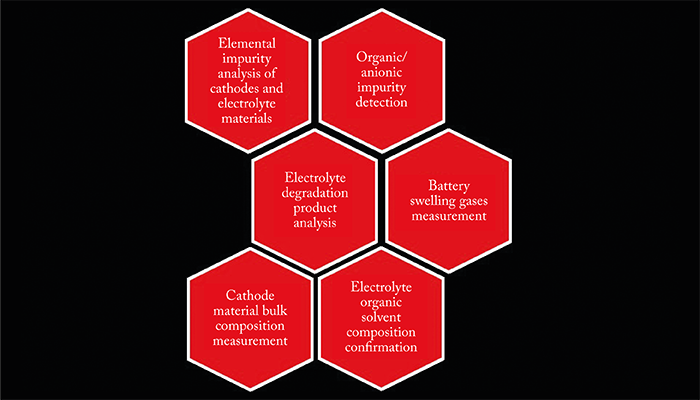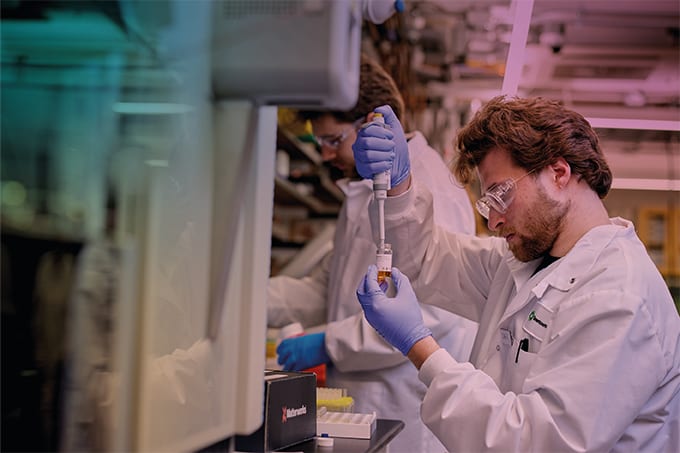
Credit: Supplied by Author
Individuals, companies, and regulators across the globe are seeking to lower reliance on fossil fuels and move towards more environmentally friendly alternatives. To support this goal, manufacturers have focused on making batteries live longer, perform better, and be more eco-friendly, so they become a more viable alternative to existing products. As a result, new and improved battery-powered products are consistently hitting the market – aiming to transform how batteries can be used.
Demand for batteries shows no signs of slowing down, and the Lithium-ion market is expected to reach $273.8 billion by 2030. But as the market continues to grow, pressure increases on the manufacturing industry to efficiently scale their products without compromising product safety, quality, and value. Otherwise, they risk losing customers, damaging their reputation, and harming their profits.
Further complicating matters are changes in regulations. As part of the upcoming Battery Passport regulations, every battery sold in the EU that is more than 2 kWh in size must have its own passport that contains details of its origins and environmental footprint by 2026. While this is a welcome change to support sustainability and quality, it means manufacturers need to ensure that traceability is thoroughly incorporated into their manufacturing processes as soon as possible.
To meet the new regulations, manufacturers must provide detailed product data, including material sourcing, carbon footprint, recycled material percentages, battery durability, and repurposing and recycling guidelines. With this data, companies are better equipped to understand the sustainability of their product manufacture and can subsequently make changes to improve it.
Battery passport regulations request analytical data to be included in reporting, however, it is dependent on the specific location and the elemental purity and auditable testing of batteries and cells.
However, to provide this data, manufacturers will have to ensure their processes are fully traceable, with all data and metadata meticulously recorded. But, to meet their own needs, and those of their customers, this needs to be done effectively, while ensuring scalable processes.
A Laboratory Information Management System (LIMS) can support battery manufacturers in achieving these goals. However, many companies already have a Manufacturing Execution System (MES) – why won’t this suffice?
But I already use an MES…
If labs already use an MES, implementing a LIMS can seem unnecessary at first. However, while an MES and a LIMS have overlapping functions, an MES is not fully equipped to overcome industry challenges and support the upcoming Battery Passport regulations.
The main function of an MES is to survey production process management. To do this, it gathers information on production scheduling, dispatches and executes production orders, and monitors production performance – for example the status of equipment.
A LIMS, on the other hand, is a comprehensive solution for the battery testing industry — we summarize its capabilities in Figure 1. Unlike an MES, a LIMS enables manufacturers to continuously track and manage metallurgical samples from raw material to finished product. It does so by gathering sample information throughout the entire lifecycle, including data on the analyst to ensure they are qualified to execute the tests.

Through its advanced capabilities and data tracking, a LIMS brings multiple benefits across the battery testing sector:
Improved traceability
Reduced manual transcription
Simplified regulatory compliance
When it comes to traceability, an MES measures the way a product goes through the production value chain but lacks additional data and metadata on testing processes in the laboratory. A LIMS, on the other hand, collects rich data on everything related to quality, including samples, experiments, lab workflows, and instruments. While both have their place, it’s clear that a LIMS can bring additional benefits to the battery industry and support companies as the new passport requirements come into place.
As well as enabling traceability, a LIMS can also help manufacturers scale their product while maintaining quality. For example, a LIMS plays a vital role in a quality assurance (QA) lab.
Consistent and efficient QA
As part of their day-to-day, QA labs must perform a range of analyses and measurements to evaluate battery performance, enable improvement, and identify areas to minimize scrap waste, as summarized in Figure 2. To perform these tests consistently and efficiently, labs must:
Define the exact sequence of tests to ensure processes flow in sequence
Track different test sequences, as well as individual battery test failures and successes
Manage long testing cycles that can tie up test equipment
Maintain flexibility through real-time adaptation
Ensure sufficient testing resources are available

Figure 2: The extensive tests required in battery manufacturing QA.
A LIMS can help QA labs overcome these challenges and enable consistent and efficient processes in two ways: defining testing order and parameters, and improving lab organization.
With a LIMS, users can define not only the test execution order, but multiple test sequences in a matrix as well, to make sure that the impact of testing on battery samples does not skew the results and that processes are reproducible – even at scale. Labs can also use a LIMS to help them define the parameters for test failure and success. Defining such parameters not only enables labs to maintain the highest quality standards for their product but helps them identify areas where scrap can be reduced.
Moreover, a LIMS helps labs better organize the data from a large volume of complex laboratory processes and workflows. Intuitive dashboards in the software help to improve efficiency by showing lab instrument and resource availability, including stocks of standards and reagents – allowing labs to better plan for their workload. Additionally, a LIMS also helps labs understand which tests to prioritize, and to predict and prepare for busy testing periods, all at a quick glance.
What’s more, a LIMS can also integrate other relevant systems and instruments, such as an MES, enterprise resource planning (ERP) software, and chromatography data systems. By doing so, analysts have the data where they need, when they need it, ensuring maximum workflow efficiency.
The future of scalable battery manufacture
Escalating demand, in conjunction with The Battery Passport regulations, are putting pressures on battery manufacturers, increasing the need to make their processes more repeatable, traceable, and scalable. A LIMS offers multiple functions that support battery manufacturers to achieve these goals without sacrificing quality.
With a LIMS in place, battery manufacturers can efficiently scale up their workflows and optimize their processes to reduce waste. By doing so, they can focus on delivering more environmentally friendly energy sources with fewer setbacks – ultimately supporting a cleaner, more sustainable planet.




